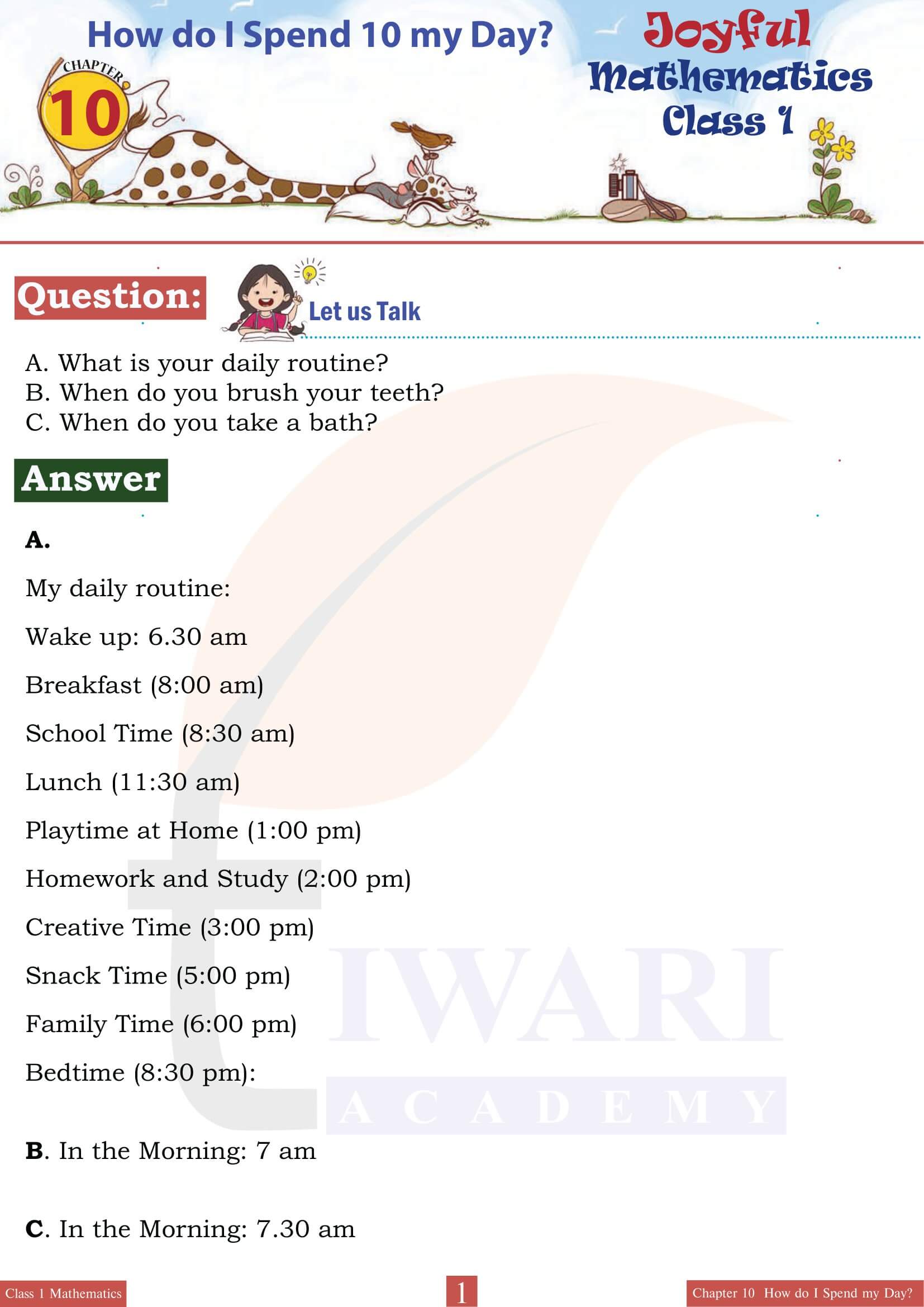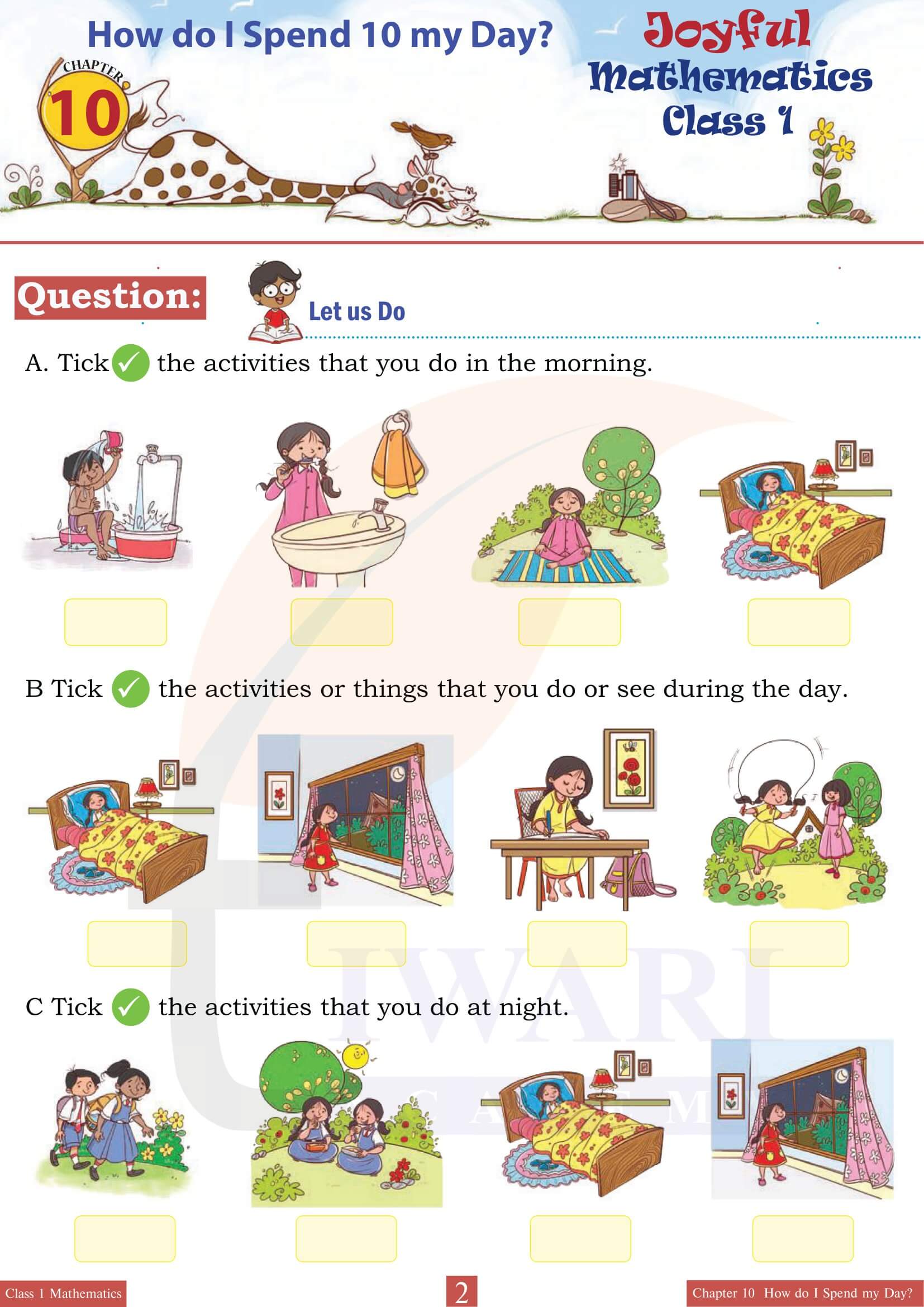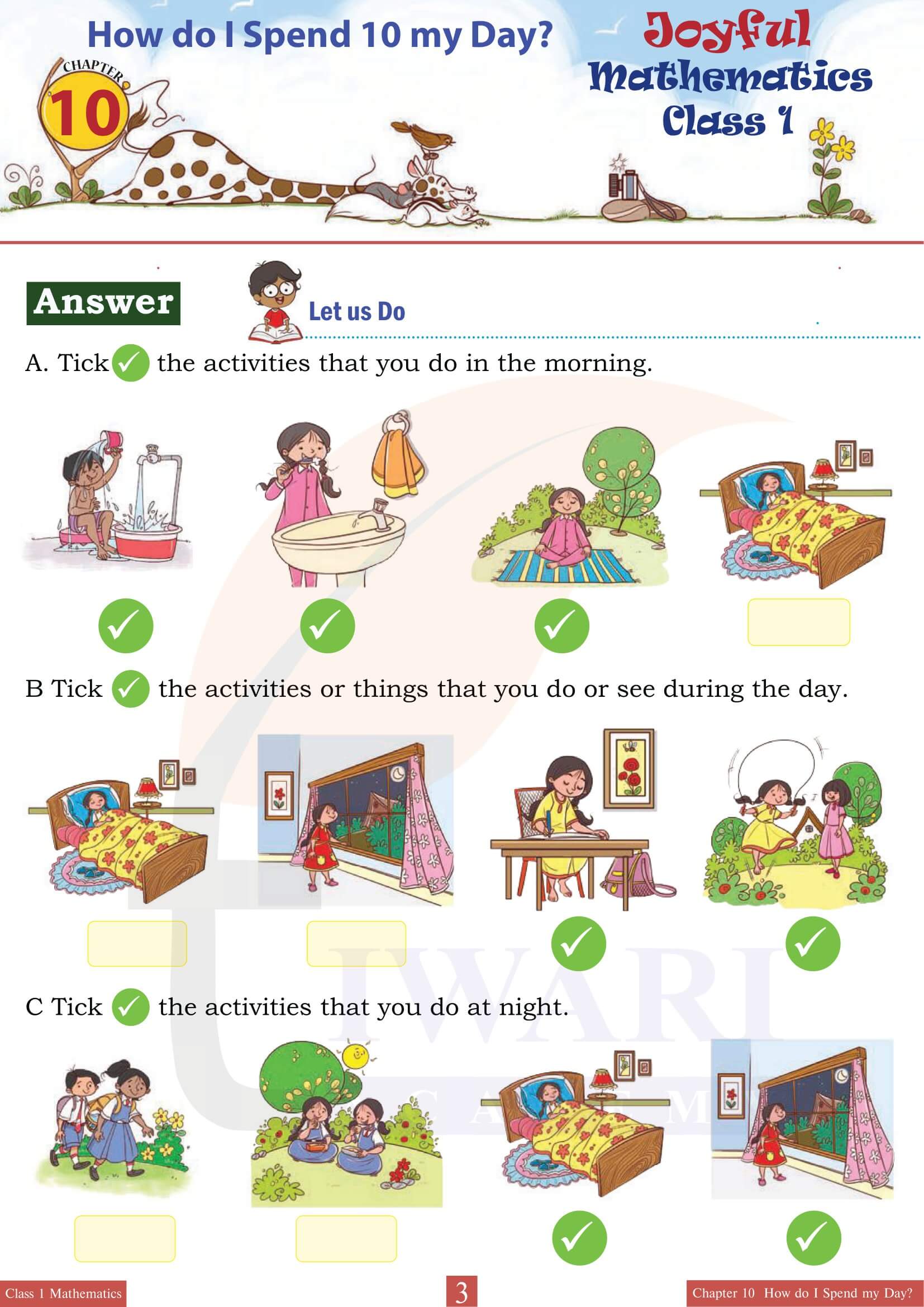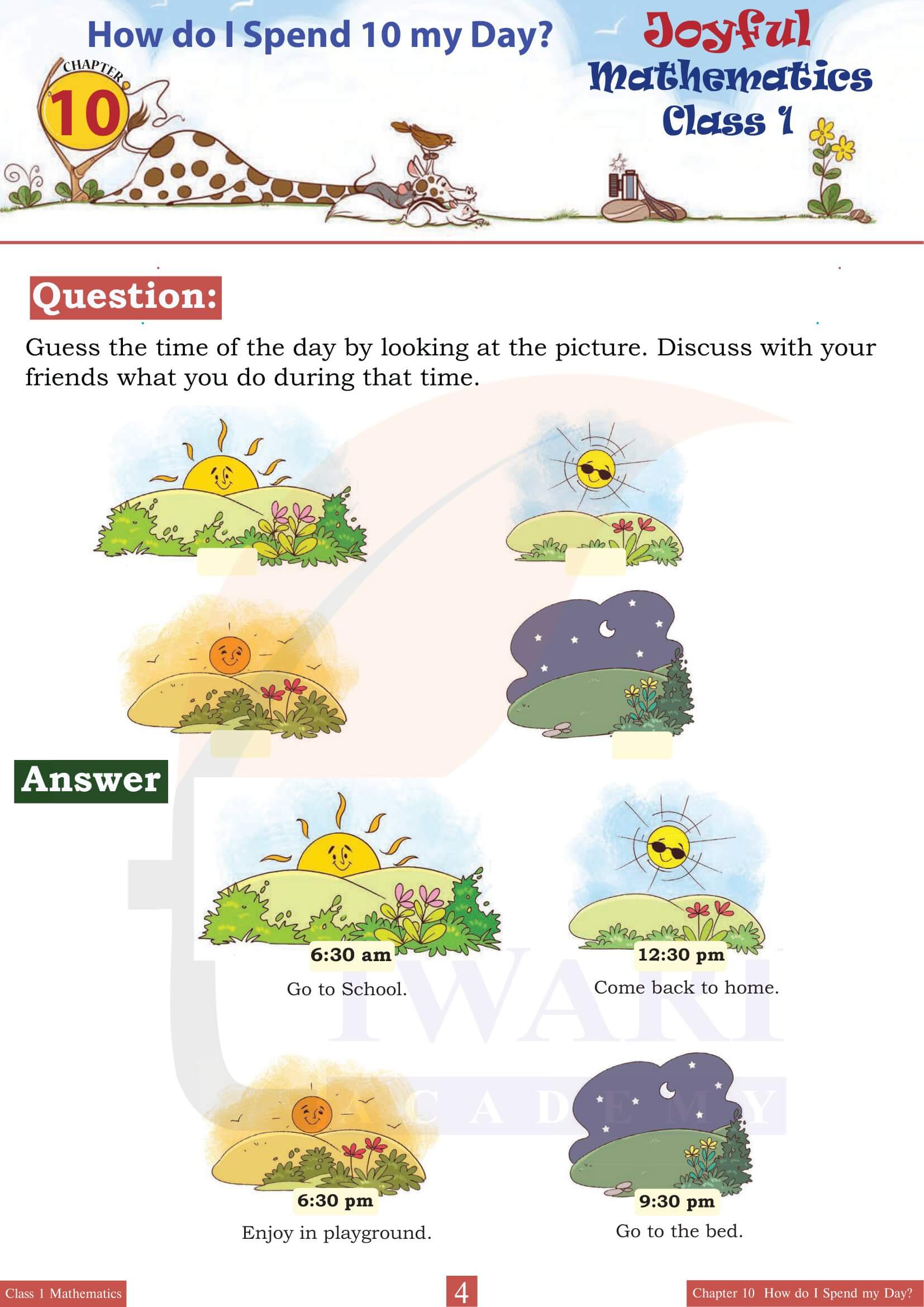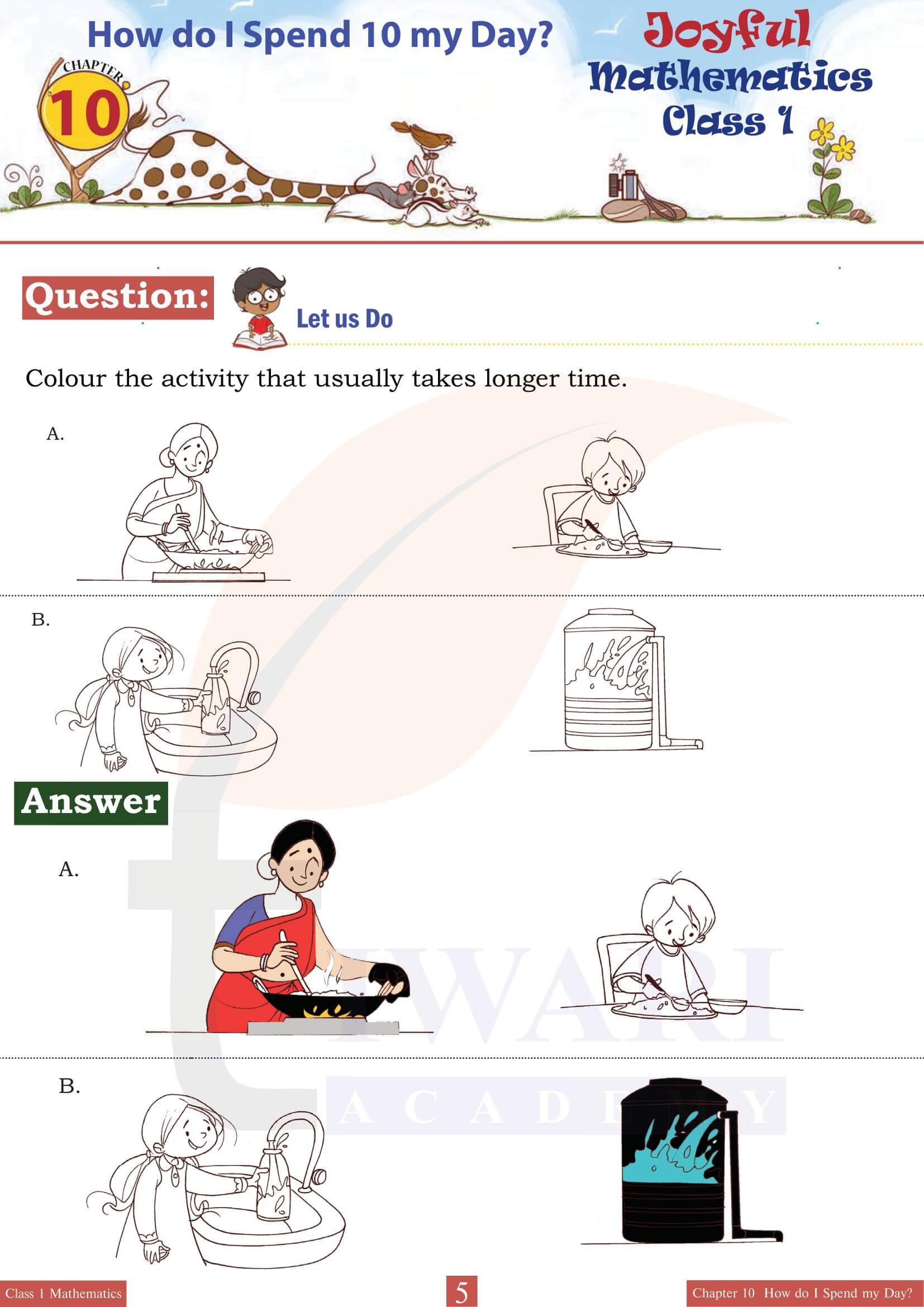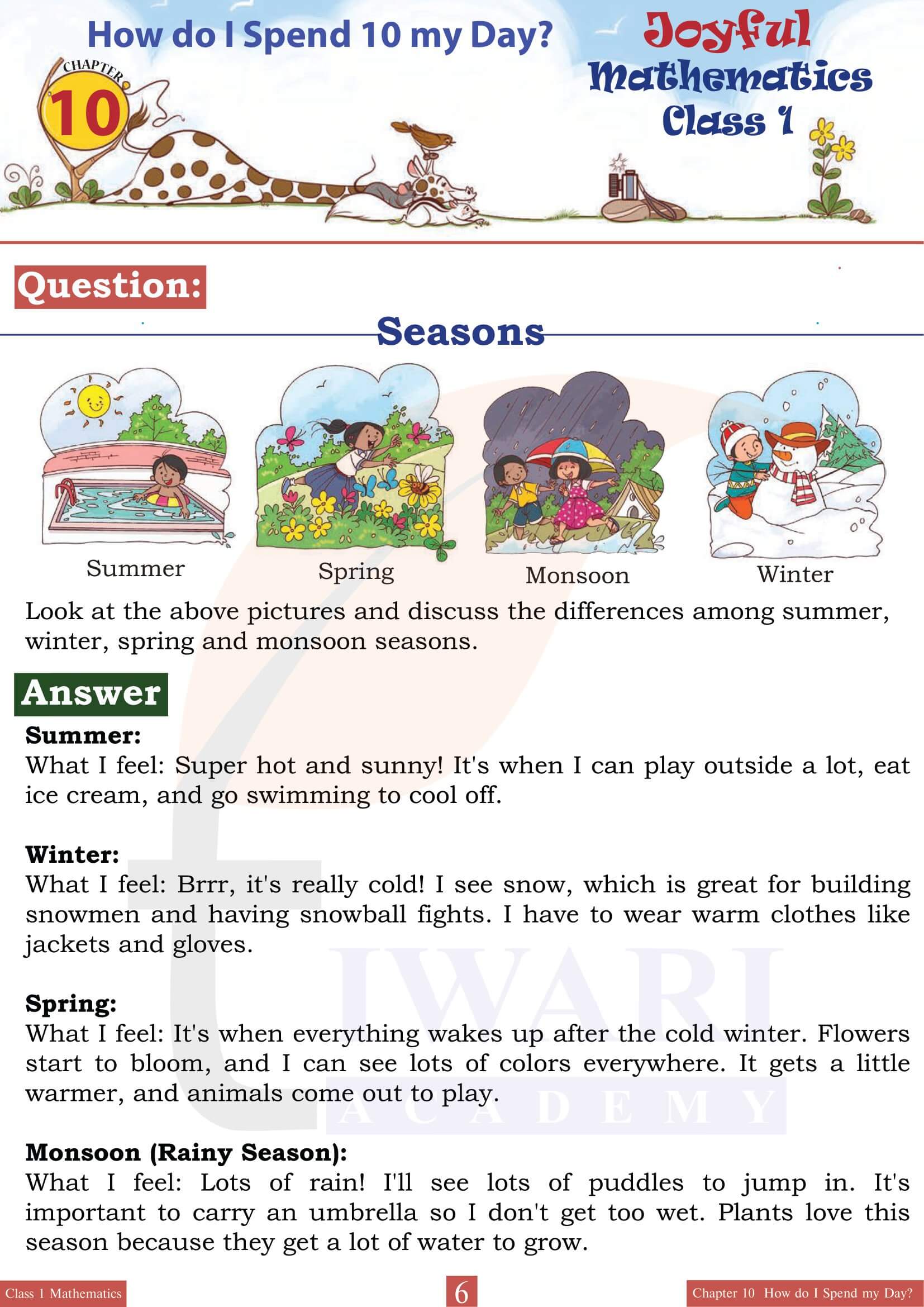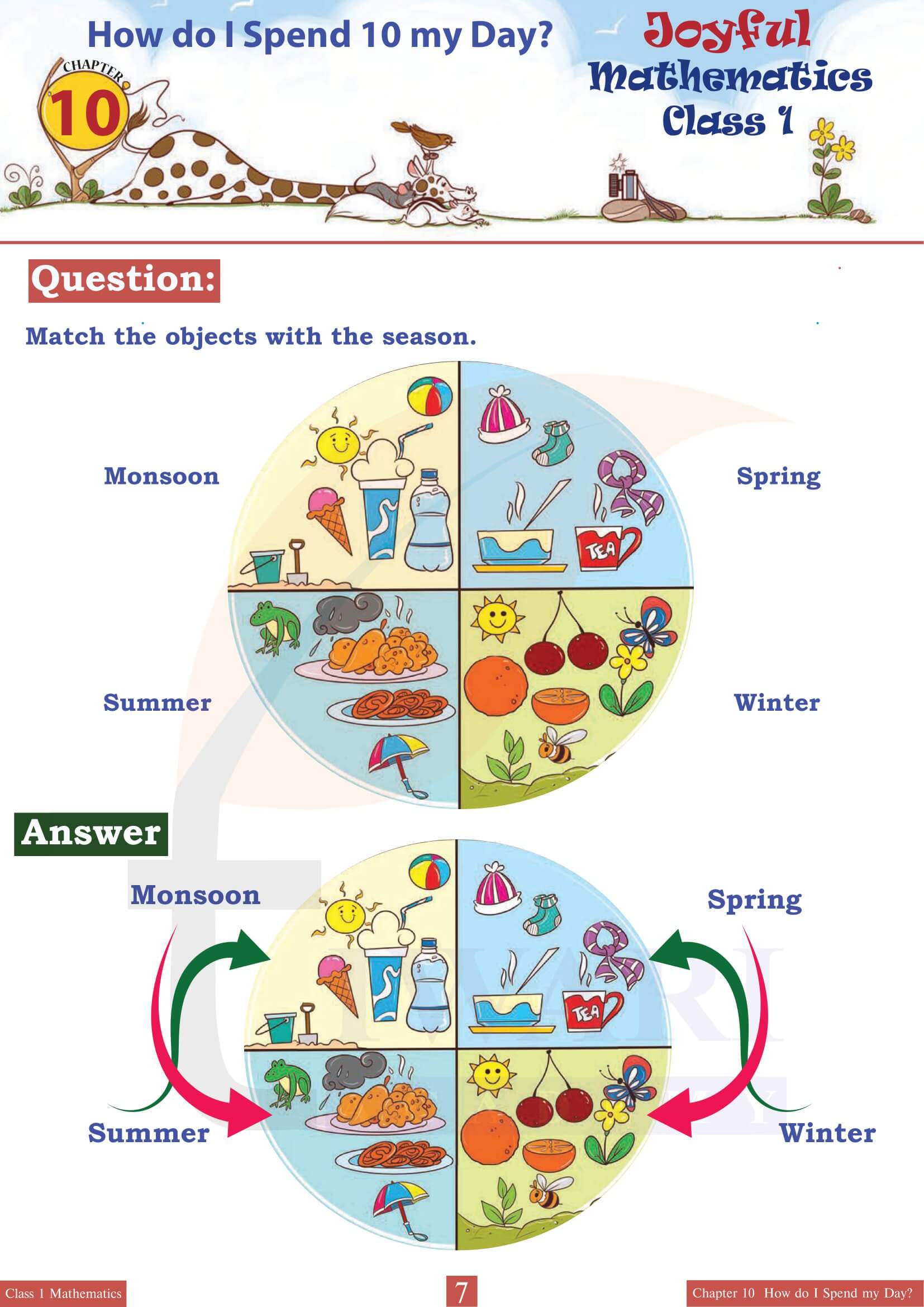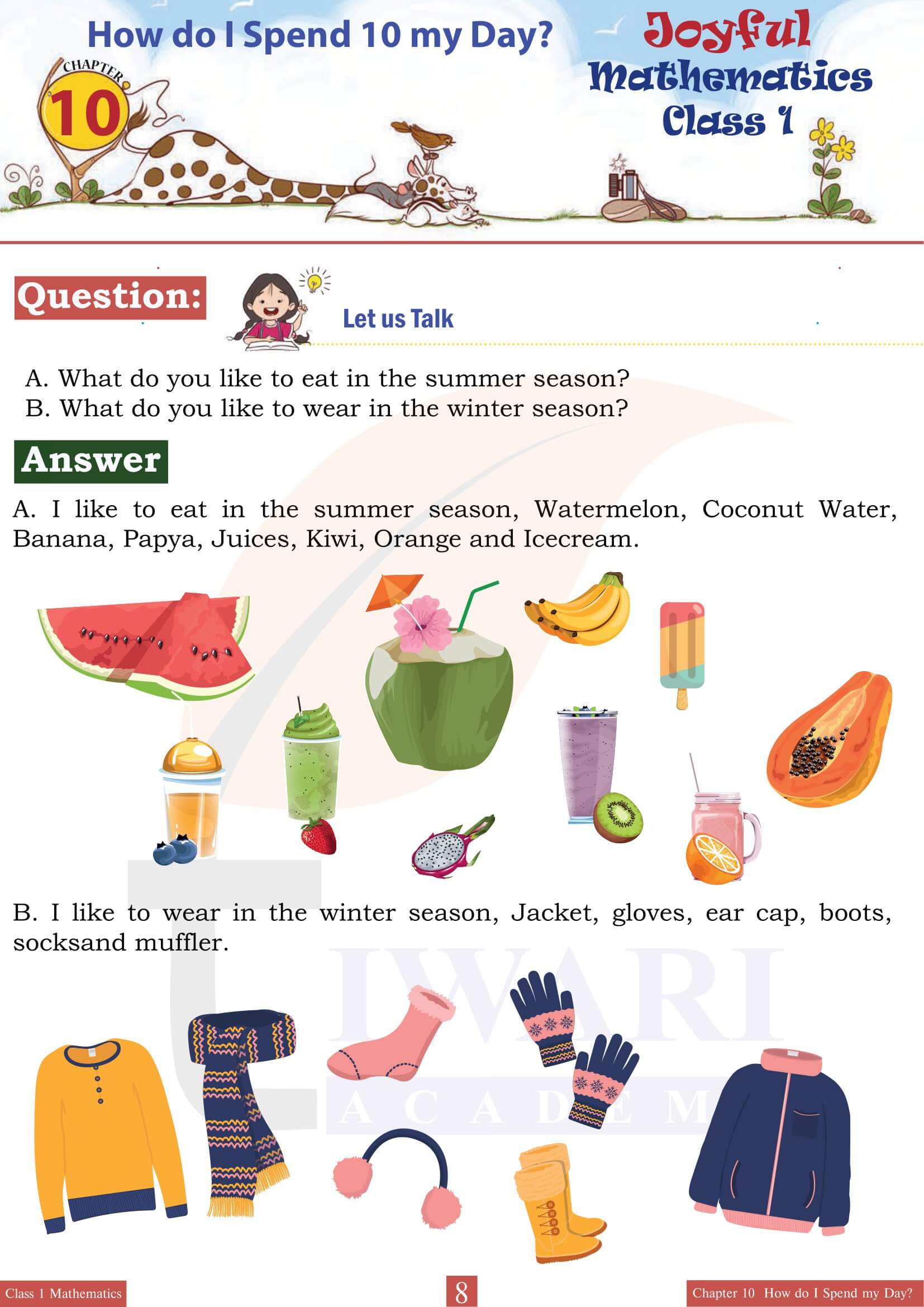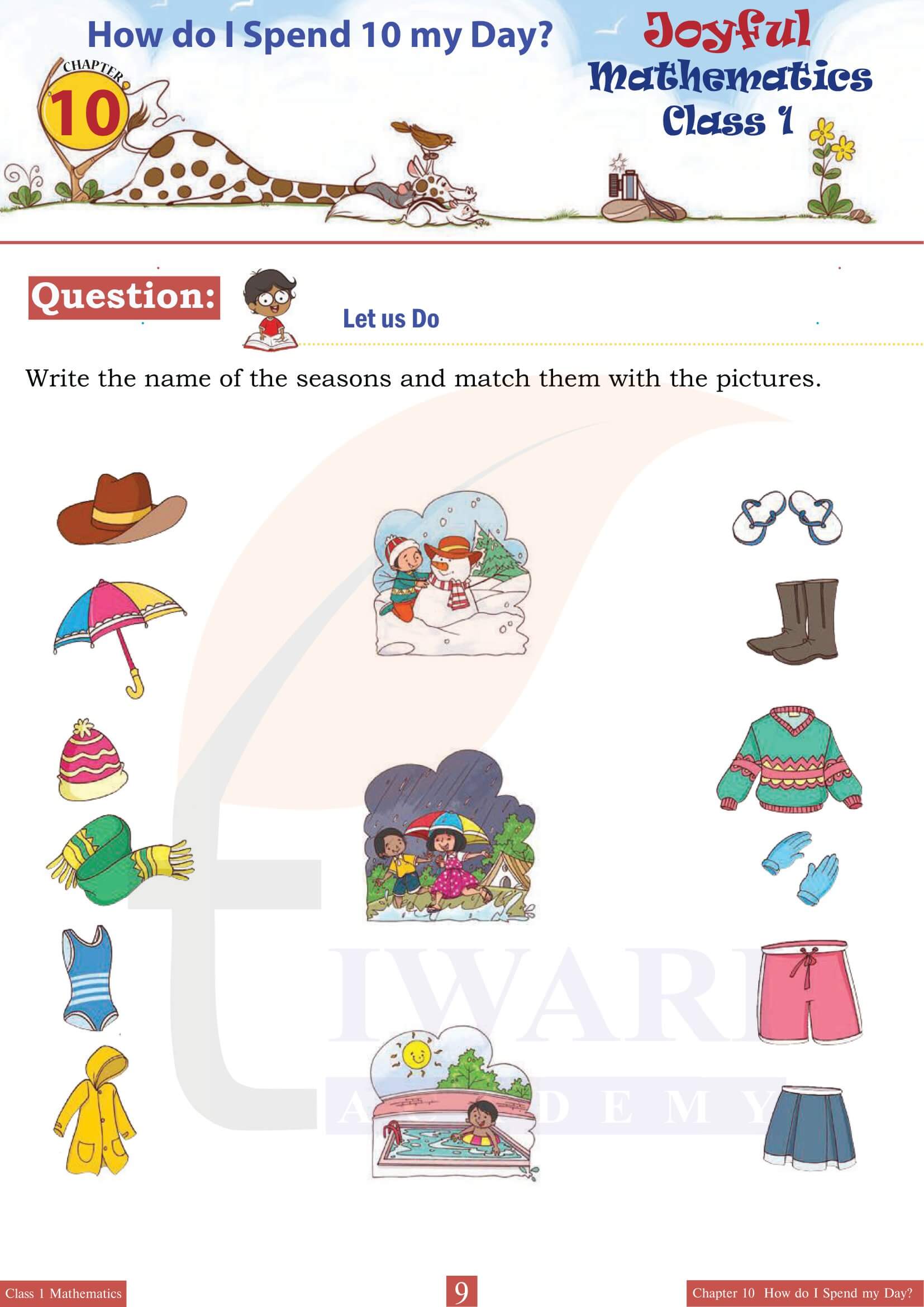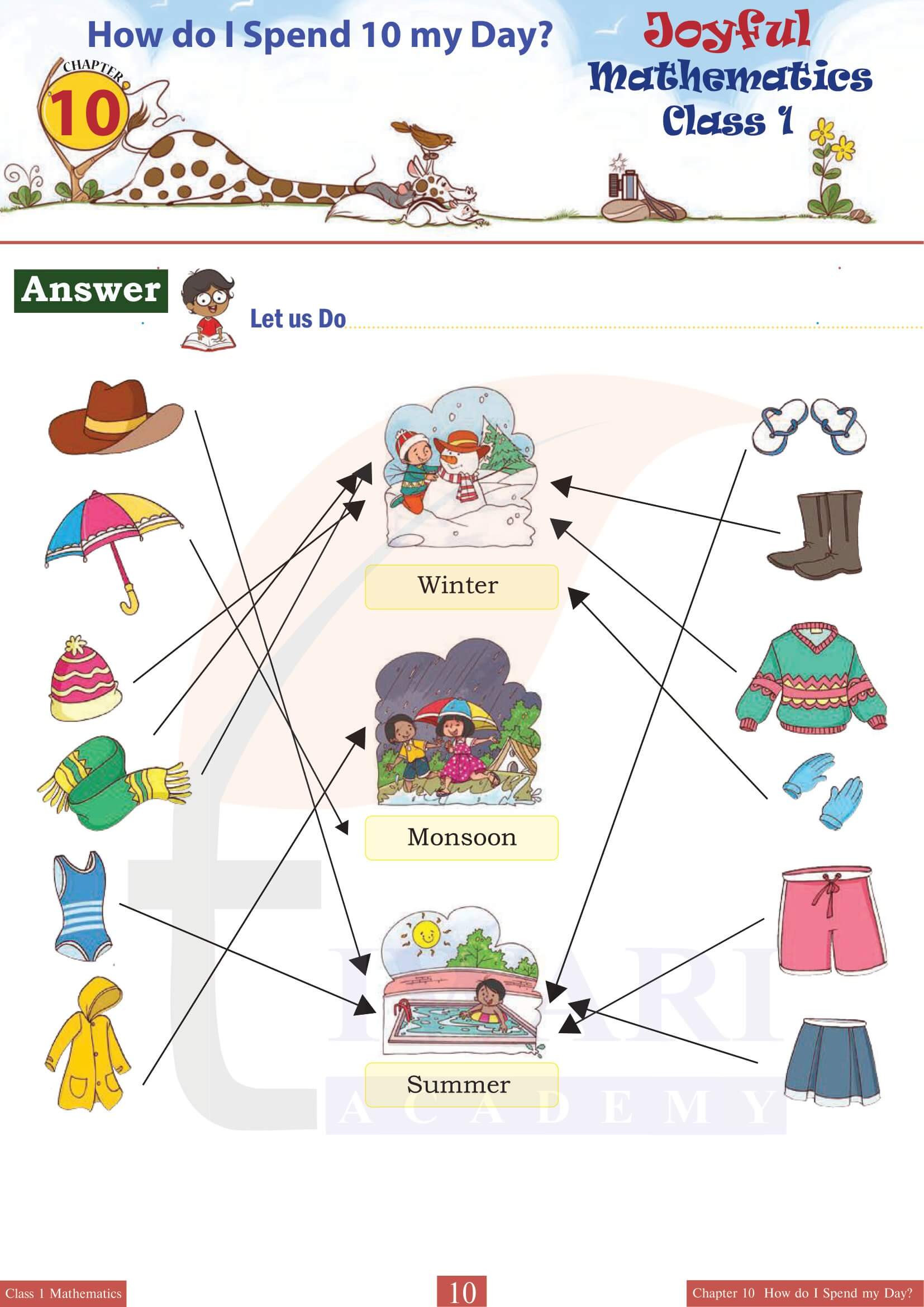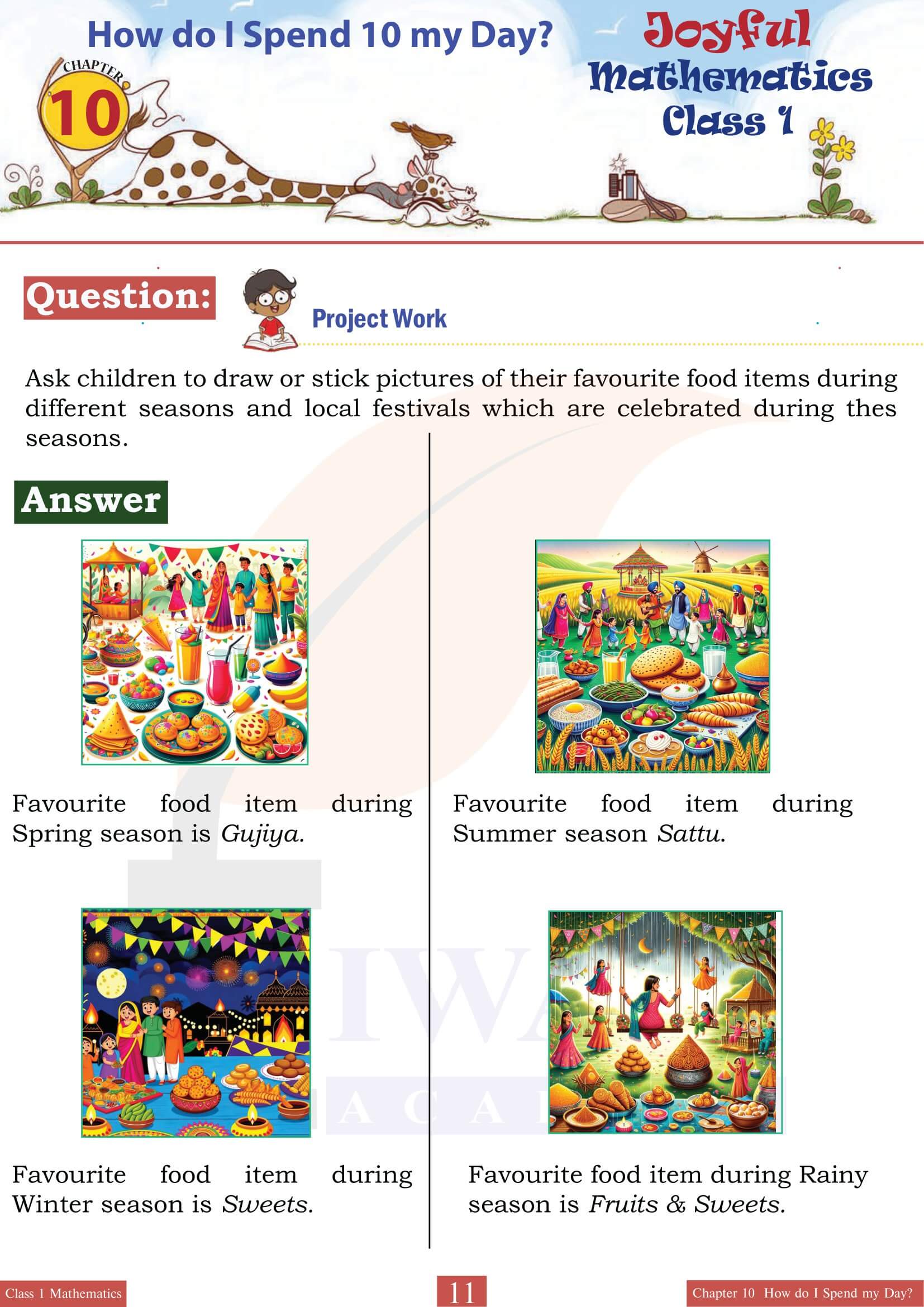NCERT Solutions for Class 1 Maths Joyful Chapter 10 How do I Spend my Day? (Time) updated for academic session 2025-26 in Hindi and English Medium. Explanation and question-answers of class 1 Joyful Maths chapter 10 are prepared according to National Education Policy 2020 based on new syllabus.
Study Plan for Class 1 Maths Exam
Class 1 Maths Joyful Chapter 10 How do I Spend my Day?
Class 1 Maths Chapter 10 How do I Spend my Day? (Time)
Chapter 10 of the Class 1 Maths Textbook “Joyful” named “How Do I Spend My Day?” is an engaging chapter designed to introduce young learners to the concept of time and its measurement in a day-to-day context. This chapter is crafted to help students relate the abstract concept of time to their daily activities, making it easier for them to grasp and apply in real life. Through a combination of storytelling, illustrations, and interactive exercises, the chapter aims to build a foundational understanding of time, including hours, minutes and the sequence of events throughout a day.
Class 1 Joyful Mathematics Chapter 10 begins with a simple and relatable narrative featuring a day in the life of a child, covering various activities from waking up in the morning to going to bed at night. This story is used as a backbone to introduce the concept of different times of the day such as morning, afternoon, evening, and night and activities associated with these times, such as eating breakfast in the morning, playing in the afternoon, dining in the evening, and sleeping at night. The narrative is carefully designed to mirror the students’ own experiences, making it easier for them to connect with the material.
Colorful Illustrations Depicting Clocks
To further solidify their understanding, Class 1 Mathematics Chapter 10 includes colorful illustrations depicting clocks showing different times corresponding to various daily activities. These visuals serve not just to break down the concept of reading time but also to engage the students’ attention and enhance their learning experience. By associating specific times with routine activities, children begin to understand the progression of time throughout the day and the importance of time management in their daily lives.
Interactive exercises play a lead role in Class 1 Joyful Mathematics Chapter 10. These activities are thoughtfully designed to encourage students to apply what they’ve learned in a fun and engaging way. Exercises include matching activities where students pair times with corresponding activities, drawing hands on clocks to show specific times mentioned in the story and sequencing events according to the time they occur. These exercises not only reinforce the concept of time but also develop critical thinking and problem-solving skills as students decide how to allocate time to different activities.
The Class 1 Joyful Chapter 10 also touches on the concept of duration by discussing how long certain activities might take, such as an hour to play outside or thirty minutes to complete homework. This introduction to measuring intervals of time is crucial for young learners as it lays the groundwork for more complex time-related concepts they will encounter in higher grades.
Exercises of Class 1 Maths Chapter 10
Reflection questions at the end of the chapter encourage students to think about how they spend their day and to recognize the patterns in their daily routines. These questions are designed to promote self-awareness among students about their time management and encourage them to think about how they can make the most of their day. By reflecting on their own routines, students can practice applying the concept of time to their own lives, thereby reinforcing the chapter’s lessons.
Summary of Class 1 Maths Chapter 10
Chapter 10 “How Do I Spend My Day?” from the Class 1 Maths Textbook “Joyful” is a comprehensive introduction to the concept of time for young learners. Through storytelling, illustrations, interactive exercises and reflection, the chapter aims to build a solid foundation of time understanding that students can build upon in their future studies and everyday lives.
It encapsulates a holistic approach to learning, making the abstract concept of time tangible and relatable to the young minds, fostering not only their mathematical skills but also their time management and planning skills.
